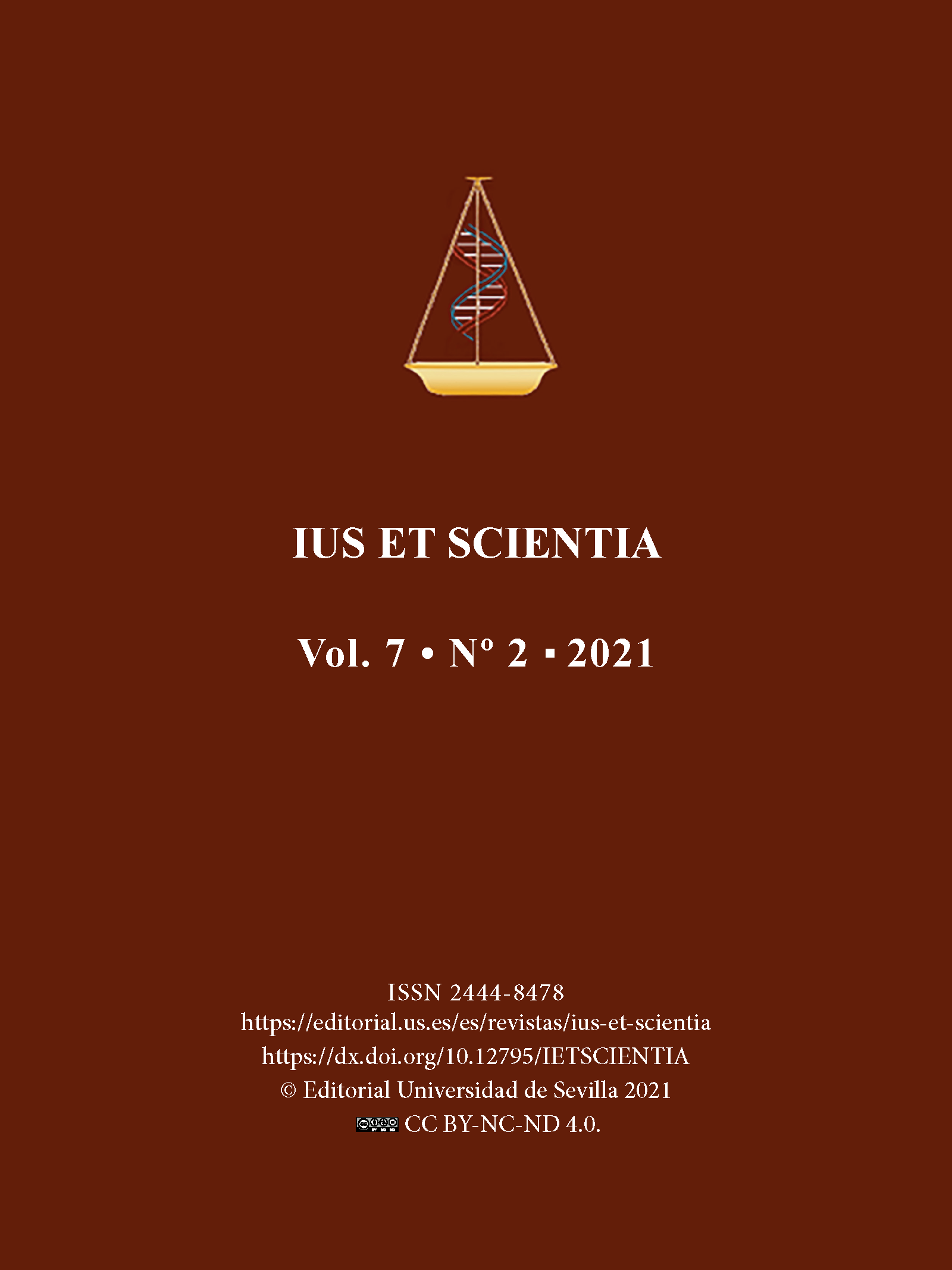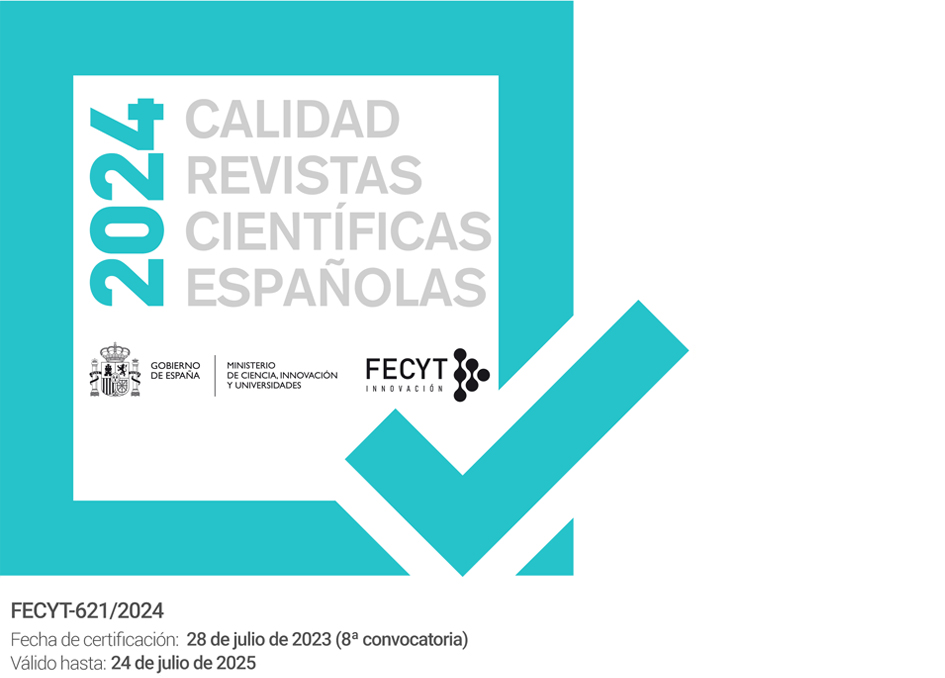The fourth age. Law and elderly
DOI:
https://doi.org/10.12795/IETSCIENTIA.2021.i02.09Keywords:
Elder abuse, Fragility, Domestic abuse, Age of aging, The fourth ageAbstract
At a family you learn by the hard way. A deaf learning process that starts at early age and that pivots around the acceptance of the use of violence as a way of resolving conflicts or imposing the will of the individual against the rest of the members of the family unit. Victims of violence in their childhood learn this pattern of behavior get used to it, normalize it, and when the time comes, they reproduce it, switching from victims to executioners, in a cycle of infinite violence.
Older people represent a fragile and vulnerable collective for physical and psychological abuses, they are victims who cannot or do not want to defend themselves, thus protecting those who, out of love or fear, do not dare to betray.
The violence is an element of power, to dominate the victim who is now older and as fragile and vulnerable as a child, who is poorly treated and humiliated in the domestic environment, by the hands of those who were once cared for and protected by or by those who assume a personal or professional obligation to do so. The study of criminal and constitutional protection and the proposal for an old regulation is the objective of this article.
Downloads
References
ALONSO ÁLAMO, M. (2010). “Protección penal de las personas mayores. Cuestiones de técnica legislativa.” Valencia: Tirant lo Blanch.
ÁVILA-FUNES, J. A. (2008. ). “La fragilidad, concepto enigmático y controvertido de la geriatría. La visión biológica.” Mediagraphic. Artemisa en linea., 255 a 262. Vol. 144, nº 3.
BRAVO, N. (2013). “La fragilidad como elemento estructural de la violencia humana”. Revista de filosofia Dialnet. vol.30, nº75, 3,2013. ( págs.134-149). Disponible en: Vista de La fragilidad como elemento estructural de la violencia humana (produccioncientificaluz.org). Consultado el 26 de abril del 2021.
Gobierno de Ontario. (2002). “Declaración de Tornto para la Prevención Global del Maltrato de las personas mayores”. Ginebra: Organización mundial de la salud.Disponible en : TorontoDeclarationV-spa (inpea.net). Consultado el 1 abril de 2021.
GÓMEZ, M. (2010). “Protección jurídico-penal de las personas mayores frente al abandono. Especial consideración de los delitos de los artículos 226, 229, 230, de la falta del artículo 619 CP y de sus relaciones concursales.” Revista de Derecho penal y Criminología, 3ª Época, nº 4., ( págs.175-198).
HOYOS SANCHO, M., JAVATO MARTÍN MANUEL DE HOYOS M. (2010). “Los ancianos como víctimas especialmente vulnerables: algunas particularidades procesales”. En “Violencia, abuso y maltrato de personas mayores. Perspectiva jurídico penal y procesal”. Valencia : Tirant lo Blanch.
LIMÓN MENDIZABAL, M. R. (1992). “Carácteristicas psicosociales de la tercera edad”. Pedagogía social: revista interuniversitaria,( págs.168-178.)
MARCO, M. P. (2019). “Los malos tratos en la tercera edad. La invisibilidad como factor de vulerabilidad.”. TraHs. nº5. Université de Limoges.
RODRIGUEZ NUÑEZ, A. (2007). “ Violencia en el ámbito familiar” Coord. Collado José en “ Elementos básicos dela investigación criminal”. Instituto Universaitario General Gutierrez Mellado de investigación sobre la paz, la seguridad y la defensa. UNED.
VERDUGO ALONSO, M. A. (1999). “ Qué se sabe del maltrato en la población con discapacidad intelectual”. Revista siglo cero, nº 30.
Published
How to Cite
Issue
Section
License
Those authors being published in this journal agree to the following terms:
- Authors retain their copyright and they will guarantee to the journal the right of first publication of their work, which will be simultaneously subject to license recognition by Creative Commons that allows others to share such work provided it is stated the author’s name and his first publishing in IUS ET SCIENTIA.
- Authors may take other non-exclusive distribution license agreements version of the published work (e.g. deposit in an institutional digital file or publish it in a monographic volume) provided it is stated the initial publication in this journal.
- It is allowed and encouraged that Author s disseminate their work via the Internet (e. g. institutional digital files or on their website) prior to and during the submission process, which can lead to interesting exchanges and to increase citation of the published work.
- Abstract 326
- PDF (Español (España)) 176
- HTML (Español (España)) 52





